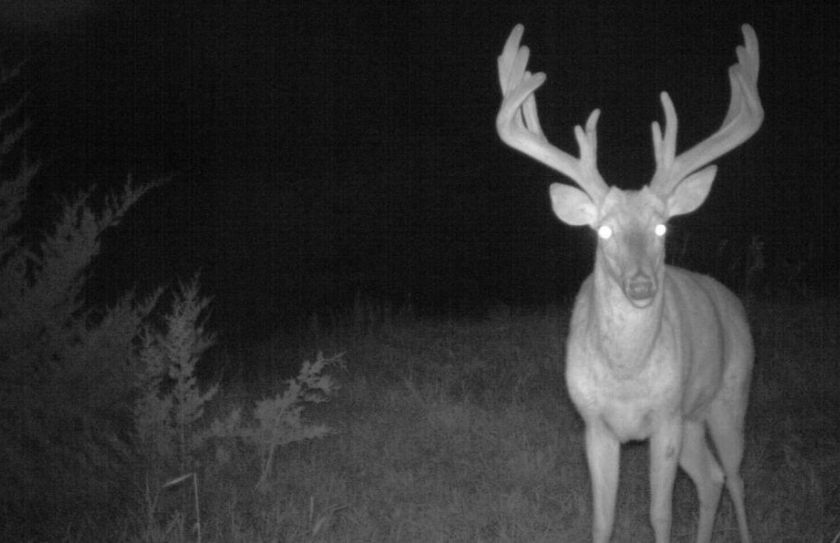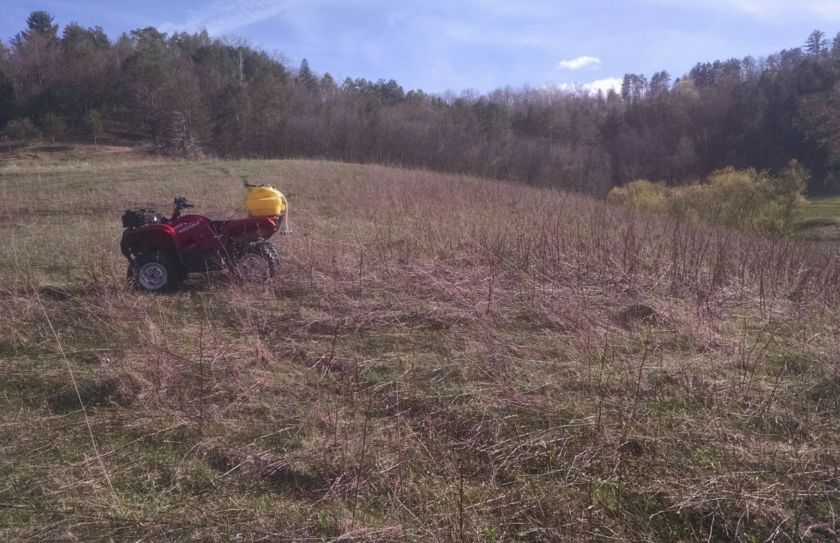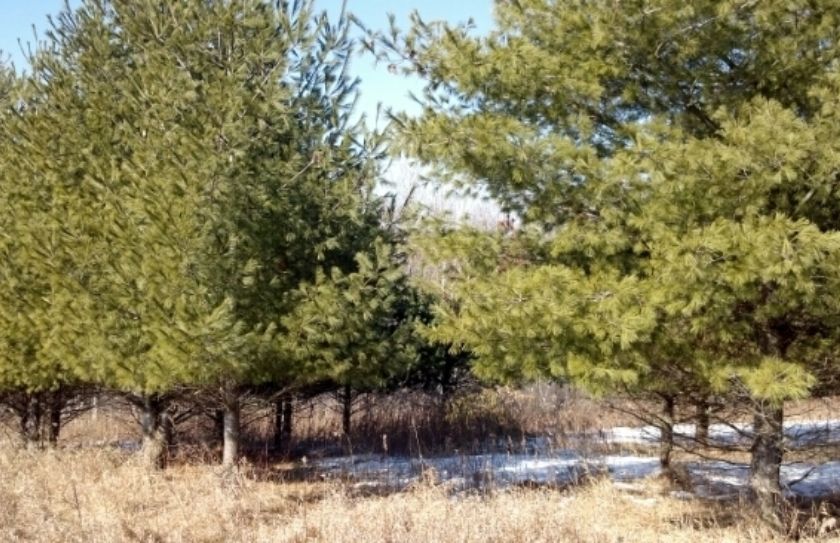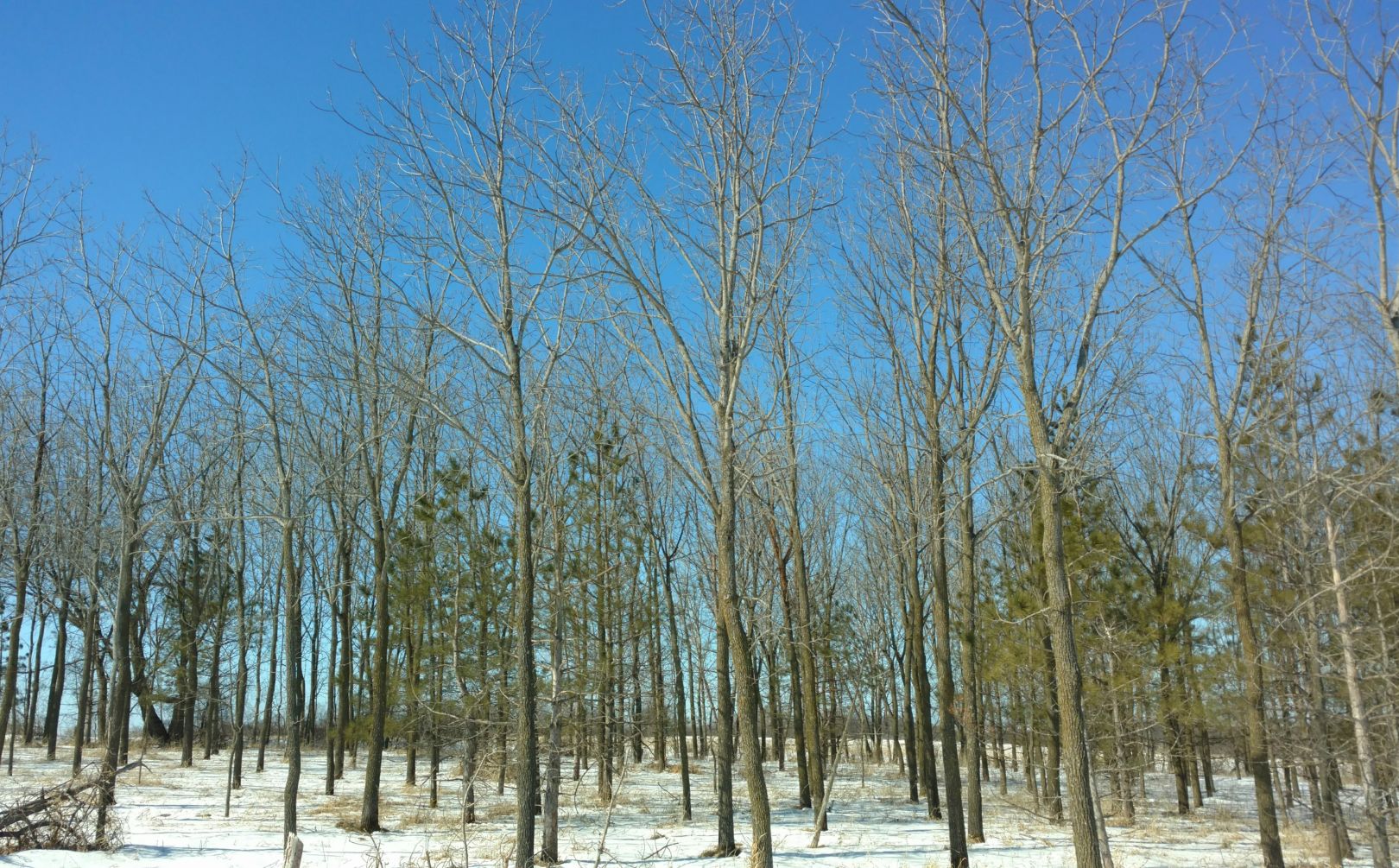
What are whitetail habitat dead Spots? Why should you recognize them on the lands that you hunt? How do they effect your hunting activities? And ultimately, how does a deer habitat dead spot effect your land’s efficieny to produce a quality her
Whitetail habitat dead spots are low enough quality level of habitat improvements on your parcel, that they make the local deer herd recognize the improved portions of your parcel, just as much as the unimproved portions. A dead spot should offer you a portion of your land to access your stand locations through, and blow your scent into while on stand, with a very low probability of spooking deer. When the deer learn to recognize both improved and unimproved areas of your habitat, your ability to hunt your parcel with a very low potential of alerting deer to your intrusions can be maintained to a very high degree.
The “schooled” approach of designing deer habitat is often to attempt to improve every square inch of your land. Areas for wetlands are often recognized and created, ideal soil conditions are taken advantage of for food sources, and high quality timber species are managed as professionally as possible; often with no regard to the strategic layout of the land. Is this a good idea? When you maintain a focus of improving 100% of your land, you can never set foot on your land without the potential of spooking deer, which can destroy your herd management efforts before the season even begins.
“Improvements with a purpose”
There shouldn’t be a lot of gray area when making deer habitat improvements, instead every single improvement should have its place on your land, and every single improvement should help to define a “line in the sand” between the hunter, and hunted. That line should also create a highly recognizable difference of the level of quality improvements, where high quality improved habitat areas meet low quality whitetail habitat dead spots. The line in the sand of habitat improvements also forms a consistent source of heavy cover for cruising buck movement to take place, while bucks travel to scent check the interior high quality deer habitat improvements. At the same time, the line of lack of improvements allows you to access these areas non invasively, and at the same time drift your scent into these areas of little to no deer.
How do deer habitat dead spots help you with neighboring tresspassing concerns? Check out how the following article discusses taking advantage of dead spots for both trespassing and hunting strategies:Whitetail Trespass Strategies
Why Whitetail Habitat Dead Spots are a Necessity
Many parecls across the country have been improved to take advantage of various habitat conditions, or possibly even goverment assisted habitat creations, including:
1. Food plots may be installed simply in a location determined by the best soil 2. Bedding areas could be hinge-cut because the habitat was the best dry spot on a slight knoll to construct beds within 3. Travel corridors may be tunneled into a spot because they were within the best age of trees to produce a deer corridor 4. Ponds could be beautifully sculpted to utalize the lowest and wettest portion of the property. -Have you ever manipulated timber or portions of your deer habitat for food or bedding purely because, “we had to do something with it”?
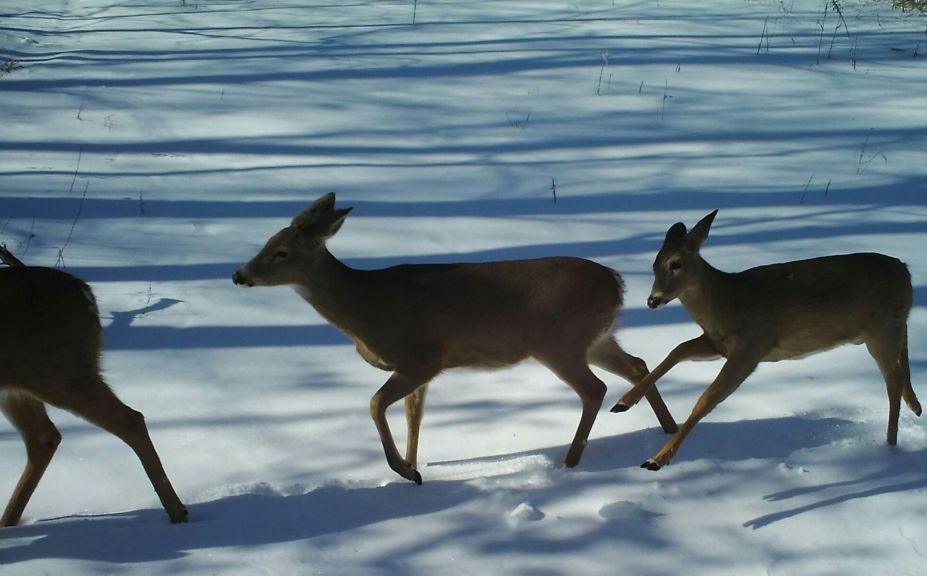
*Creating afternoon movements from bedding area to food sources is critical to your herd, habitat and hunting efforts. Whitetail habitat dead spots are necessary to define this movement! For more information on when, why and how to create this most important deer behavior in the woods, please check out, “The Most Critical Deer Habitat Strategy”.
The greatest reason for creating deer habitat dead spots is so that you can provide a drastic difference between the land that you want the deer to relate to, and the land that you do not. The more that you define the line of separation between hunter and hunted, the more that you can define how you strategically hunt the local deer herd. Why are deer habitat deer spots important in the whitetail woods? Because they not only offer you areas to access through and blow your scent into while in your deer stand, but they allow you to highly define the exact habitat locations that deer spend the majority of time on the land that you hunt. And when you define where deer aren't going to spend their time, you can then define where to actually set your stand locations. Designing the perfect conditions for your herd and hunting efforts is often about creating as a high a level of attraction, without creating so high a level across your entire parcel that you can’t possibly set foot on your land without the potential of spooking deer.
An effective deer habitat design includes both improved habitat hotspots and unimproved habitat dead spots
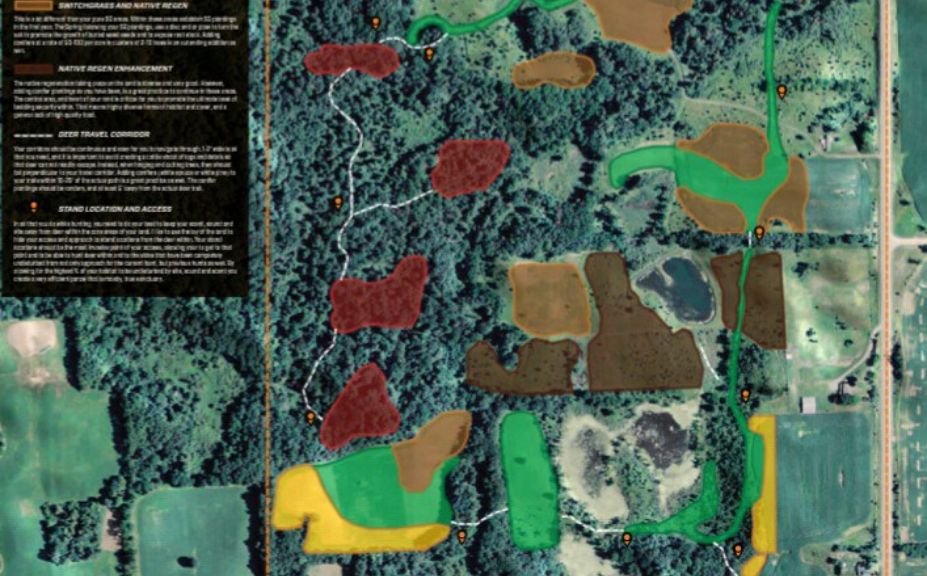
*Although drastically improved, this map illustrates the importance of using unimproved dead spots to access stand locations. To make sure that your are not improving too much on your own land, make sure to read, “Attractive Deer Habitat: More Harm Than Good?”.
What are Whitetail Habitat Dead Spots?
Deer habitat dead spots are not wastelands of opportunity. Here are a couple of deer habitat dead spot types for you to consider:
1. Switchgrass:
Switchgrass is often a greatly misunderstood whitetail habitat component. The forefront of this misunderstanding surrounds the fact that deer are rythmic pattern feeders, while feeding 5xs in a 24 hour period. That means that during the hunting season whitetails are typically feeding 3 times during the nighttime hours, and 2 times during the daytime hours. If Switchgrass is used as bedding area during the daytime hours, there is a total of zero food available for any deer that would potentially bed within (that thought can also be applied to solid stands of conifer). However what Switchgrass lacks in it’s ability to offer bedding cover with the exception of cover starved regions, Switchgrass is an outstanding screening grass! Switchgrass is quite capable of effectively screening deer within bedding areas, screening deer from you while you access your stand locations, and screening deer from each other. All of those Switchgrass attributes work togeter to reduce the overall level of stress to the deer herd on your land. And just as important, Switchgrass can be used to access through non invasively in most areas, was well as to blow your scent into while in your deer stand. Switchgrass could be just the qualilty habitat improvement dead zone that you need to offer for a high level of hunting strategy combined with a highly defined purpose.
2. Select-cut:
Mature Hardwood: Select-cut hardwood can provide an increase in the pounds per acre of native regeneration, due to the decrease in the overall % of canopy. Also, the tops, debris and wood regeneration from the timber harvest will provide an important form of side cover that deer desire for daytime bedding cover. Many parcels feature a mono-culture of timber harvest focus, for example: Rotational pocket cuttings, parcel wide single timber management cuts or property-wide timber plantings of the same kind of habitat. When a deer parcel is harvested or planted the same across the entire landscape, than both random and unpredictable deer movements take place. When random deer movements take place, so do unpredictable and inconsistent levels of hunting success. So how do select-cut mature hardwood cuttings offer a defined movement, deer habitat dead zone? Because although they can be a quality upgrade over a stand of mature hardwoods, they still pale in comparison to the full benefits of a deer habitat focused timber harvest that offers a strategic habitat design. and that difference in quality, is what defines deer use and movement.
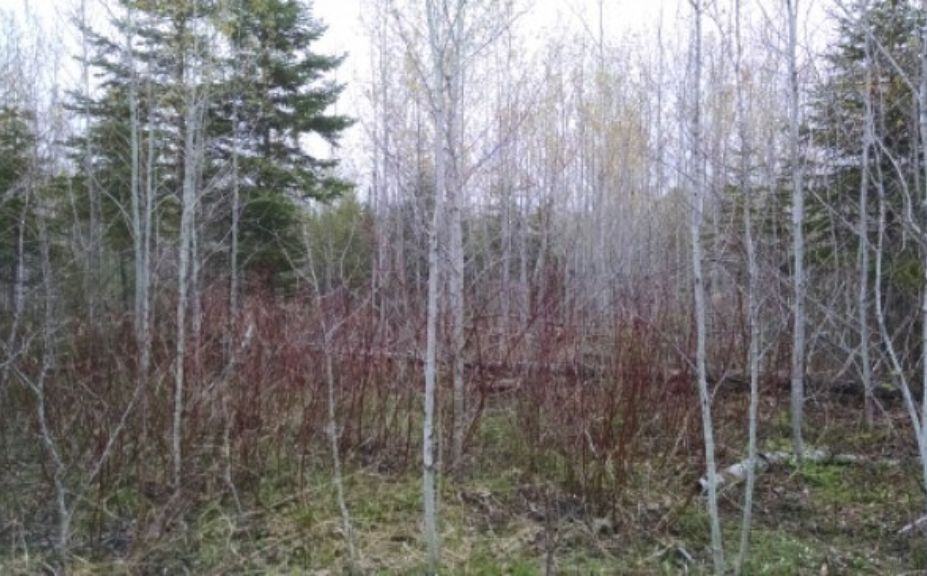
Clearcut timber activities create an explosion of growth, an explosion of the available pounds per acre of food, and a much higher level of deer usage. By planting 100-150 conifers per acre following a clearcutting of hardwood or aspen, the diversity of the area can also be substantially improved. On a scale of 1-10, a mature stand of park-like hardwood may feature a “2” when it comes to it’s overall deer cover and food potential. When a stand of hardwood is clearcut and combined with a light conifer planting, that same area may jump to an 8 out of 10 or higher. Where does a select cut fall? Probably around a 4 or 5 out of 10, which is still much higher than a stand of mature hardwoods, but much lower than a cutting designed for increased habitat diversity and nearly a 100% removal of the canopy. Maybe the numbers aren’t completely exact, but the differince quality is what creates a deer habitat dead zone…and not the number itself. In some cases a select-cut would be all that it takes to produce a whitetail dead zone (4/10), when compared to a mature stand of unmanaged hardwoods(8/10).
*For a simple (unscientific) guide, equate the % of the canopy removed with the overall value that you increased the regeneration and cover potential by. For example a 20% canopy reduction would mean that you improved the land to roughly a 2/10, and an 80% canopy reduction would equal a habitat that would have improved to an 8/10. Although not an exact science, it can at least offer you a little perspective while considering some deer habitat dead zones for your own land.
Your Land’s Level of Efficiency
The ideal % of efficiency for your land will vary greatly! For example you still need the same amount of space to access a deer stand whether you are walking along the border of an 80 acre parcel, or a 40 acre parcel. Also, wet areas, ridges and open pasture may dictate a variety of access puzzles to consider. Deer habitat dead zones allow you to access and hunt your land with a low propability of spooking deer, but they also eat into your parcel’s overall efficiency rating because they are not included within your deer-specific improvements. Because you have to access your treestands, it is pretty hard to designate over 60% of your land on a 40 acre parcel for “all deer, all the time”, but as the # of acres increases, so does the overall potential efficiency of the land. 80 acre parcels often approach 70-75% efficient, and it is no uncommon for parcels of 160 acres and larger to approach 80% or higher. By making sure that you have enough acres of habitat dead zone on the land that you hunt, you can work towards keeping the local deer herd oblivious to your hunting efforts.
Where does your parcel rank in it’s ability to produce mature bucks? The ability for your land to offer you great access to your stand locations, as well as to “hide” deer within your habitat improvements are two of the most critical aspects of a great piece of hunting ground.

*Don't forget to check out my trilogy of Advanced Whitetail Hunting and Habitat Strategy books, including my latest book,"Mature Buck Success by Design".
Whitetail Habitat Dead Spots For High Level Hunting Impact
When you accomplish a clear line of habitat improvements, you help to define exactly where the deer on the land that you hunt will be, and where they won’t be. Where they will not be is just as important as where they will be…maybe even more important! By defining exacly where the deer should be on your land, you can more effectivley attract, build and hunt a quality herd. While hunting that means that not only can you build a quality deer herd, you can more efficiently hunt and harvest that herd when desired as well.
Deer habitat dead spots need to be improved and of course are not “dead”, but part of the process isn’t just to establish that the line in the sand between “improved greatly”, and “partially improved”. By hunting the line of the deer habitat dead zone, on the downwind side of the interior improvements, you will set yourself up nicely to take advantage of a downwind cruising monster as he scent-checks the interior higher quality levels of habitat improvements. With a secure and deerless stand access available, you can create a reliable set-up to harvest deer that are relating to the highly defined areas of improvement towards the interior of your land. On a separate note, this is no different than when scouting for your next public land hotspot. A great spot to hang a stand, can really be a gold mine if you can access and move through an adjacent habitat dead zone to access your stand.
That line where dead meets fully alive can often be intensely improved as well. Travel corridors, long winding food sources, and the exterior edge of a highly improved bedding area are all outstanding areas to ambush a whitetail that has been lured into a false sense of security within the improved portion of the hunter/hunted line in the sand. That line should be continuous with very few holes, as well, so that a deer can relate to those improvements over a long, strong and continuous movement. That’s why often long lines of food plot are better than multiple small plots; and continuous available food is much better than small plots that have differing food sources planted on each plot. Often, deer fail to “follow the plan” when there are gaps in the available food source or security of the bedding cover, during the hunting season. By offering continuous and adequate food and cover choices just inside of your deer habitat dead zones, you can create a highly defined access, departure and hunting plan of attack.
Conclusion
Have you been tempted to improve every square inch of your land? Don’t be dismayed, you aren’t the only one! An effective deer habitat management plan shouldn’t contain a focus of improving 100% of the habitat, but instead should include a focus of providing the most improved acres that can be accomplished without improving so much that you can’t exactly determine where deer should spend the majority of time on your land. In the past it was pretty natural to attempt to offer the latest cool habitat craze in the best set of habitat conditions on your land for that improvement. I have personally experienced that this created a lot of very attracted “messes” of attract and repel conditions for the local deer herd. The best spot on your land for the latest habitat craze may or may not, offer the perfect set of habitat conditions. If you can change your focus to include whitetail habitat dead spots within a highly defined whitetail design, you will be well on your way to offering the balance needed for both improved and unimproved portions of habitat to offer consistent and definitive whitetail success.
